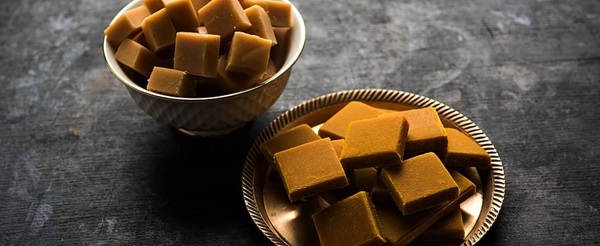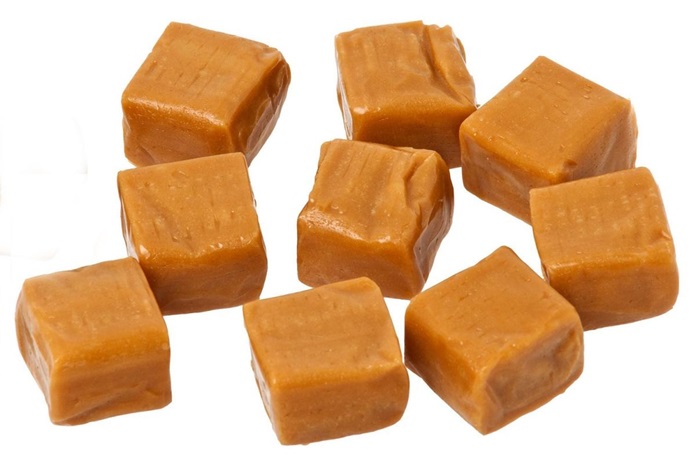National I Want Butterscotch Day is celebrated on February 15 every year. It is an unofficial day that celebrates the creamy sweetness of butterscotch. Did you know that butterscotch has been in existence for over 200 years? Butterscotch began its journey from a small town in Yorkshire before spreading across the world. It changed from just candy to a popular topping on all desserts and sweets. Butterscotch is primarily made from brown sugar and butter. Other ingredients such as corn syrup, cream, vanilla, and salt are sometimes used in addition to these primary ingredients. The brown sugar is boiled to 1150 C before it is mixed with the other ingredients.
History of National I Want Butterscotch Day
There is no detailed info on how butterscotch got its name. Though there are various theories, none have been conclusive. According to one theory, butterscotch is linked with Scotland, hence the word ‘scotch.’ Whereas another explained that ‘scotch’ means “to cut or score,” since butterscotch must be sliced into pieces, or ‘scotched, ‘ before hardening.
Butterscotch was first mentioned in the town of Doncaster, in Yorkshire, England. It appeared in an 1848 issue of the “Liverpool Mercury,” which provided a recipe of “one pound of butter, one pound of sugar and a quarter of a pound of treacle, boiled together.” Some food historians credit Samuel Parkinson, as its inventor, who began making butterscotch candy in 1817.
In 1851, several confectioners were already selling Doncaster butterscotch, such as S. Parkinson & Sons, Henry Hall, and Booths. The candy was sold throughout Doncaster and other areas in Yorkshire through agents.

However, it was S. Parkinson & Sons that stood. With the Royal Seal of Approval, S. Parkinson & Sons promoted its butterscotch brand as “Royal Doncaster Butterscotch” or “The Queen’s Sweetmeat.”
In 1948, Parkinson’s Butterscotch was given to the Duchess of Edinburgh, Princess Elizabeth, and 59 years later to Anne, Princess Royal. Butterscotch spread beyond Britain’s border to the United States between the late 19th and early 20th centuries and gained more popularity.
In the U.S., various types of butterscotch were made. Butterscotch sauce or butterscotch topping is one of the popular variants which is served over dessert and on sweets.
Also read, National Latte Day – February 11, 2025
Timeline of National I Want Butterscotch Day
| 1817 (Butterscotch is Born) | Samuel Parkinson begins making butterscotch as candies |
| 1848 (The First Mention of Butterscotch) | The confection “Doncaster butterscotch” is mentioned in an 1848 issue of the “Liverpool Mercury,” along with its recipe. |
| 1870s — 1920s (Butterscotch Comes to America) | Butterscotch is introduced to America, becoming a popular confection and dessert topping. |
| 1948 (A Royal Taste of Butterscotch) | Parkinson’s Butterscotch is presented to Princess Elizabeth, the Duchess of Edinburgh. |
5 Interesting Facts About Candy
- Sweet candy was exclusively for the rich: Only rich people candy could afford candy in the Middle Ages because of the high cost of sugar.
- Tootsie rolls were soldiers’ rations: The U.S. incorporated tootsie rolls into their military rations because of their durability in the Second World War. This made them a practical choice for troops in various climates.
- Cotton Candy’s Origins: In 1897, cotton candy was made by dentist William Morrison along with confectioner John C. Wharton to create a machine that spun sugar into fine strands. Initially, it was called “Fairy Floss,” but was renamed cotton candy in the 1920s.
- Unique Flavors: In Japan, there are sake-flavoured Kit Kats which contain a small amount of alcohol (0.8 per cent). This shows the country’s creative approach to candy flavours, providing unique choices that cater to adult tastes.
- White chocolate is not chocolate: White chocolate is not chocolate although it was marketed as the fourth type of chocolate as it doesn’t contain any cocoa solids.
- Candy Consumption: The American eats around 22 pounds of candy each year which includes both candy and chocolate. This figure showcases the crucial part that sweets play in American diets, even though they make up a small percentage of total caloric intake.
Conclusion
National I Want Butterscotch Day, is celebrated every year on February 15. The day is celebrated to honour the rich history and creamy sweetness of butterscotch. After originating over 200 years ago in Yorkshire, this candy has changed from a simple candy to a beloved topping for desserts worldwide. The interesting names of these origins remain debated, with theories associated with Scotland or the process of “scorching” butter.
The timeline of butterscotch’s journey shows key milestones, including its first recorded recipe in 1848 and its royal endorsement by Queen Victoria in 1851. In the late 19th century, butterscotch made its way to America gained popularity and inspired various adaptations, including butterscotch sauce.
Butterscotch not only offers a delightful flavour loved by many but also represents a rich cultural heritage that spans generations. On National I Want Butterscotch Day, we celebrate both the confection itself and the joy it brings to our culinary experiences.
Frequently Ask Question
What are the main ingredients in butterscotch?
The main ingredients in butterscotch are brown sugar and butter. Additional ingredients are corn syrup, cream, vanilla, and salt
How did butterscotch get its name?
There is no detailed info on how butterscotch got its name. Though there are various theories, none have been conclusive. According to one theory, butterscotch is linked with Scotland, hence the word ‘scotch.’ Whereas another explained that ‘scotch’ means “to cut or score,” since butterscotch must be sliced into pieces, or ‘scotched, ‘ before hardening.
What is the difference between butterscotch and caramel?
Butterscotch is made from brown sugar and butter, whereas caramel is prepared from granulated sugar which is heated until melted and browned
Does butterscotch contain alcohol?
No, traditional butterscotch does not contain whiskey or any alcohol.
Is butterscotch healthy?
While butterscotch is high in calories, it also contains protein, vitamin A, calcium, and antioxidants, which can provide some health benefits when consumed in moderation
Can you use butterscotch in various desserts?
Yes, butterscotch can be used in a wide range of desserts including cakes, tarts, pies, puddings, and cookies due to its sweet and creamy nature
You may also like to read, National Molasses Bar Day – February 8, 2025
